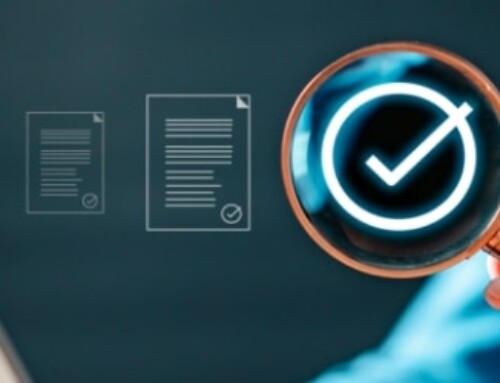Few businesses would dispute the importance of data security, but many fail to implement an effective strategy that minimizes the risk of a cyberattack. In fact, 2020 headlines show that even established organizations like Marriott, Zoom, and Twitter have fallen victim to a data breach.
Dedicating more time and resources to cybersecurity can definitely reduce the risk of a security incident. However, you must first reflect on your company’s needs and existing defense mechanisms to establish a solid strategy. Here are six key questions you need to ask yourself when it comes to deploying a resilient data security framework.
1. Can we detect and prevent cyberthreats?
A strong security framework must have robust controls in place to prevent a wide array of cyberattacks. These controls include the basics like firewalls, anti-malware software, endpoint management, and email filtering tools. You should also have advanced threat protection software. This leverages artificial intelligence to monitor systems, apps, and users for unusual file transfers, slow internet connections, and other red flags that can go undetected by more traditional security tools.
In addition to these controls, your business should be proactively installing security patches to defend against the latest threats.
You must also have a security expert conduct regular vulnerability assessments. These will reveal the weak points in your security framework so you know what you’re missing and also show you which systems need to be updated or what security measures you need to round out your defenses.
2. Is data fully encrypted?
Encryption protects data by converting plain text information into indecipherable code, thus preventing cybercriminals and unauthorized users from viewing and tampering with sensitive information. At the very least, your security framework should encrypt data in storage and in transit.
The former refers to devices that store and access confidential information like computers, servers, and mobile devices. Device encryption solutions like Microsoft BitLocker and Dell Data Protection are a must because they offer military-grade encryption standards that take today’s supercomputers millenia to crack.
Meanwhile, to encrypt data in transit, you must secure the connections where data travels. That means everything, including emails and networks, should be fully encrypted. Any website or web-based service you use or manage should have SSL/TLS certificates, which are proof of strong in-transit encryption. A VPN also allows you to create a secure tunnel between your network and the internet. Anything transmitted through this tunnel is encrypted, even minute details about your web activity, so that cybercriminals can never monitor what you’re doing.
3. Are there definitive company-wide access policies?
Your data security frameworks should primarily focus on the principle of least privilege. This means that everyone should have the bare minimum access to the apps and data necessary to do their work.
To achieve this, you must classify data and establish who is allowed access to certain types of information. For instance, the marketing department should have access to relevant customer and financial records only, not HR-related documents involving payroll and employee credentials. System administration tools like Azure Active Directory allow you to set access restrictions and make multifactor authentication mandatory based on employee roles, so you can mitigate unauthorized use of sensitive information.
Your access controls can go a step further. With unified endpoint management solutions, you can even deny access to data if people are connected to unsecured networks or using unpatched personal devices. This is especially important if your employees are working from home using personal devices.
| For more details on securing remote work environments, read our previous blog entry. |
4. Do employees have good security habits?
When it comes to data security, the weakest point is almost always the employees. Hackers often take the path of least resistance, finding vulnerabilities that are easy to exploit. So rather than using new strains of malware or advanced network intrusion techniques, they target employees through easy-to-execute yet deceptive scams to steal sensitive data.
Phishing, in particular, uses fraudulent emails to trick unwitting victims into visiting harmful websites, downloading malware-laced attachments, or sharing personal information. These emails are typically modeled after legitimate organizations and individuals to establish credibility and create a sense of urgency. A recent example of this involves phishing scammers masquerading as the World Health Organization or medical experts claiming to provide treatment for COVID-19.
But even without using scams, hackers can gain access to company data if employees aren’t taking the proper precautions. Bad habits like recycling passwords, connecting to unsecured Wi-Fi networks, and neglecting to check the authenticity of an email significantly increase the risk of a data breach.
Regular cybersecurity training ensures your staff aren’t such a major liability. Training courses should delve into topics like identifying and avoiding phishing scams, password best practices, and data sharing guidelines, to name a few. The training itself should be also engaging, mixing traditional lecture-style instruction with video tutorials and practical-based classes. Running phishing simulations with platforms like KnowBe4 is great for teaching employees about real-world attacks while assessing their security awareness. Mandatory security training should be provided at the time of hiring and at least every quarter so employees are aware of the latest security threats.
5. How prepared is the business for security incidents?
Regardless of how confident you may feel about your cybersecurity strategy, it’s prudent to have a documented and regularly tested incident response plan in case something goes wrong. This plan details the steps employees and your IT department are expected to take, including how to detect, contain, eradicate, and recover from the threat. Many states including Florida require organizations to have these incident response plans to ensure the privacy and safety of personal information.
For example, if a routine system scan discovers ransomware, employees should know to disconnect infected machines from the network and remove the threat using anti-malware tools. Training employees for these situations can dramatically minimize financial, legal, and reputational damage to your business.
Backing up your data regularly is also vital to a good incident response strategy. Ideally, you’ll want to have three copies of your data stored in at least two different storage media, one of which should be off-site. Keeping backups locally and with a reliable cloud backup provider is a great way to ensure data redundancy. This way, if your local data is compromised, you can restore everything back to a safer state with cloud backups.
6. Does the business have appropriate cybersecurity expertise?
The last question you need to ask is whether you have anyone on board who can manage every aspect of data security. Many organizations understand the importance of cybersecurity but usually don’t have enough resources to justify hiring an internal security specialist. If this is the case for you, then it’s worth turning to a managed IT services provider (MSP) that specializes in data security. Dynamic Solutions Group is an MSP that provides businesses in Illinois and Florida with top-notch security solutions and services to keep all manner of threats at bay. When you partner with us, our team of experts will thoroughly evaluate your digital environment and formulate a robust data security strategy that aligns with your company’s needs and budget. Contact us now to get the support you need.






